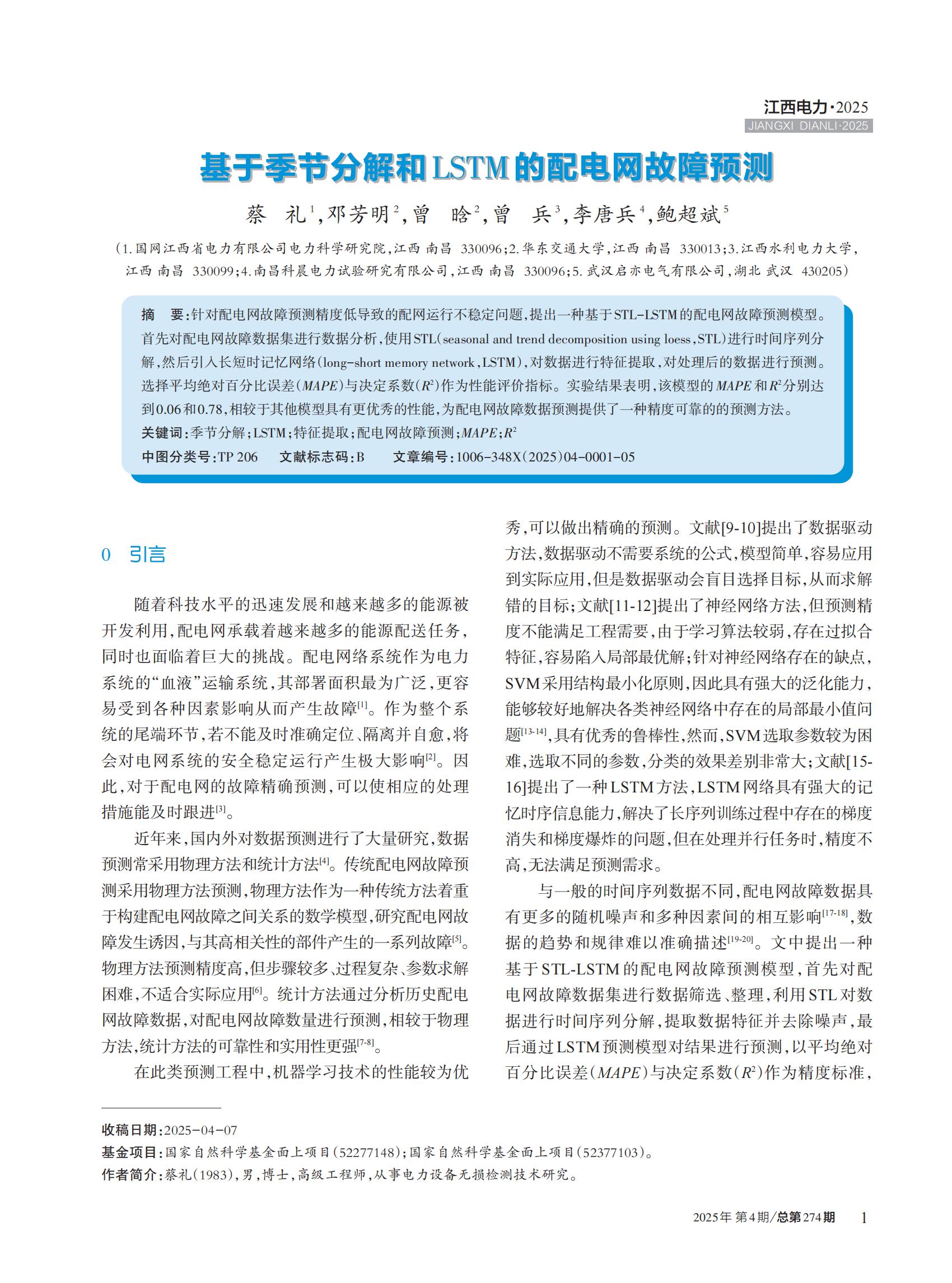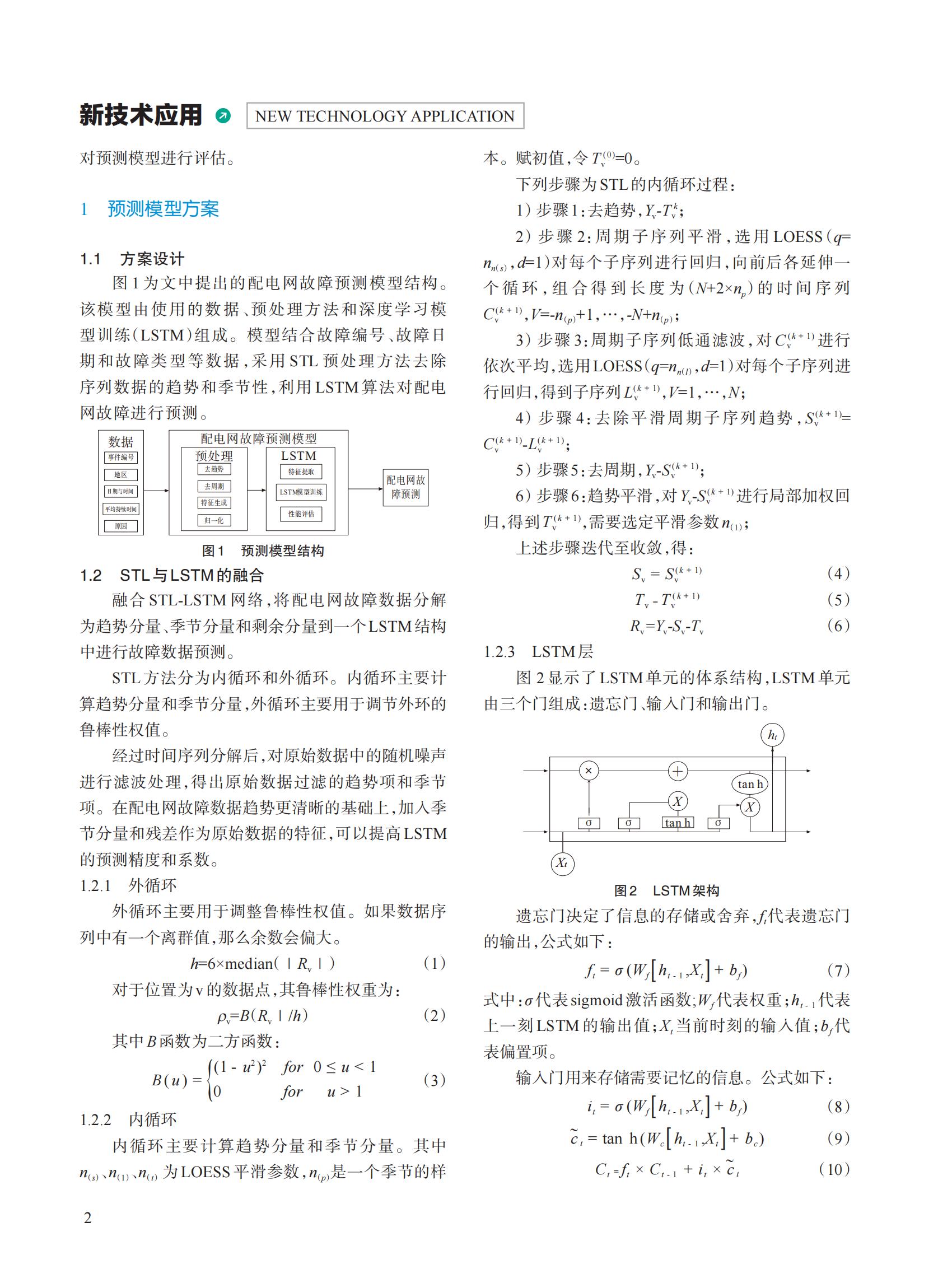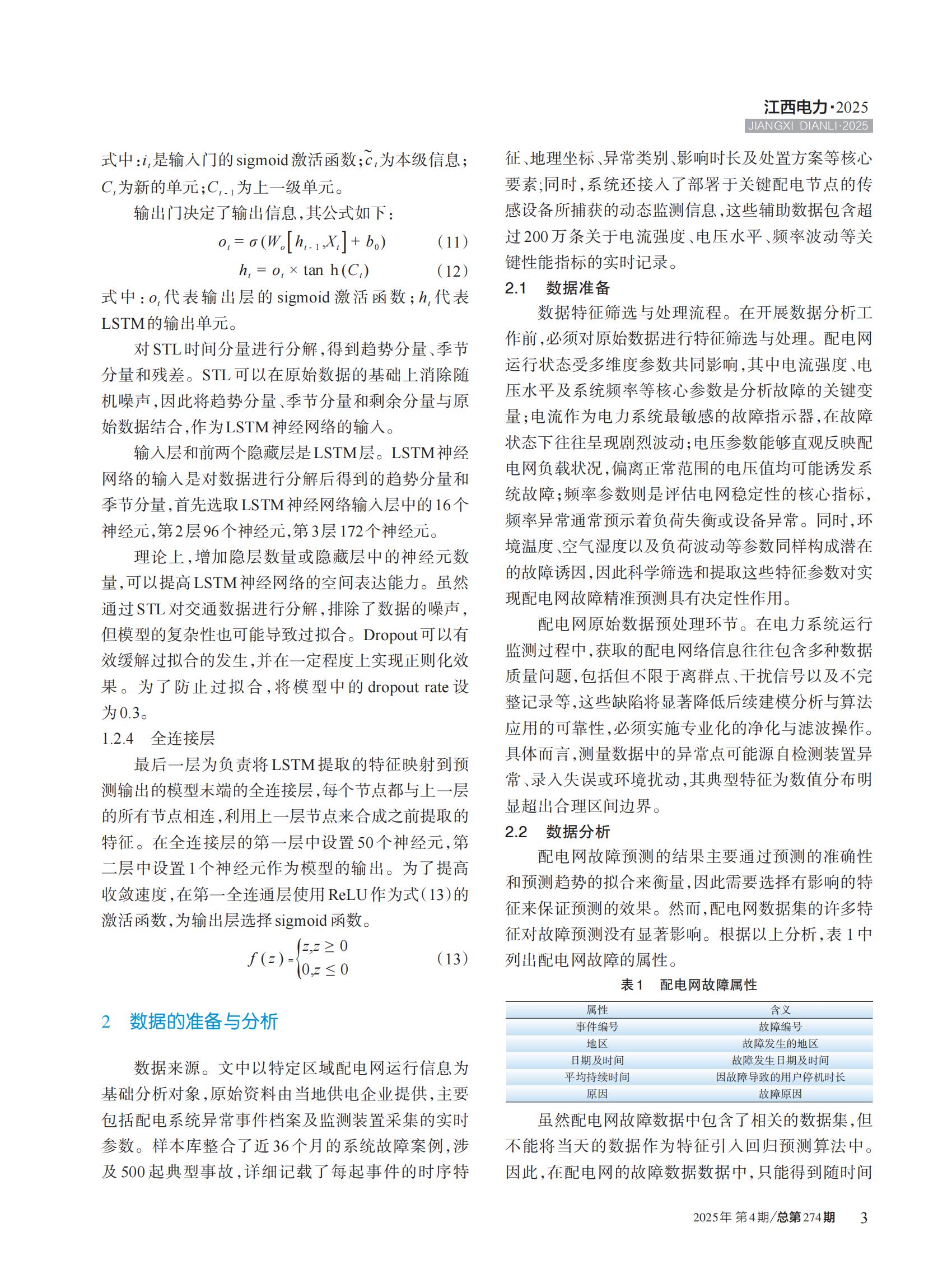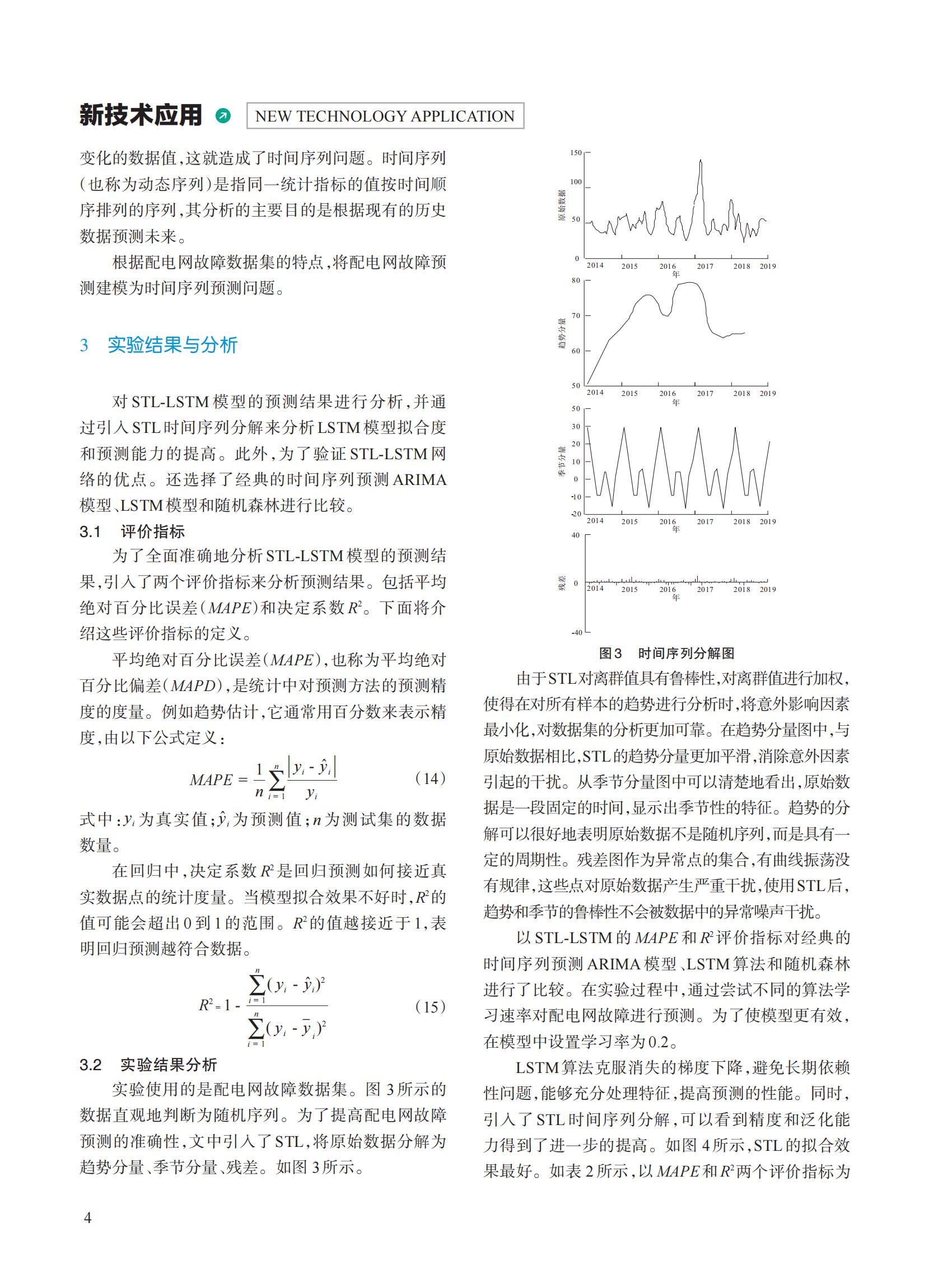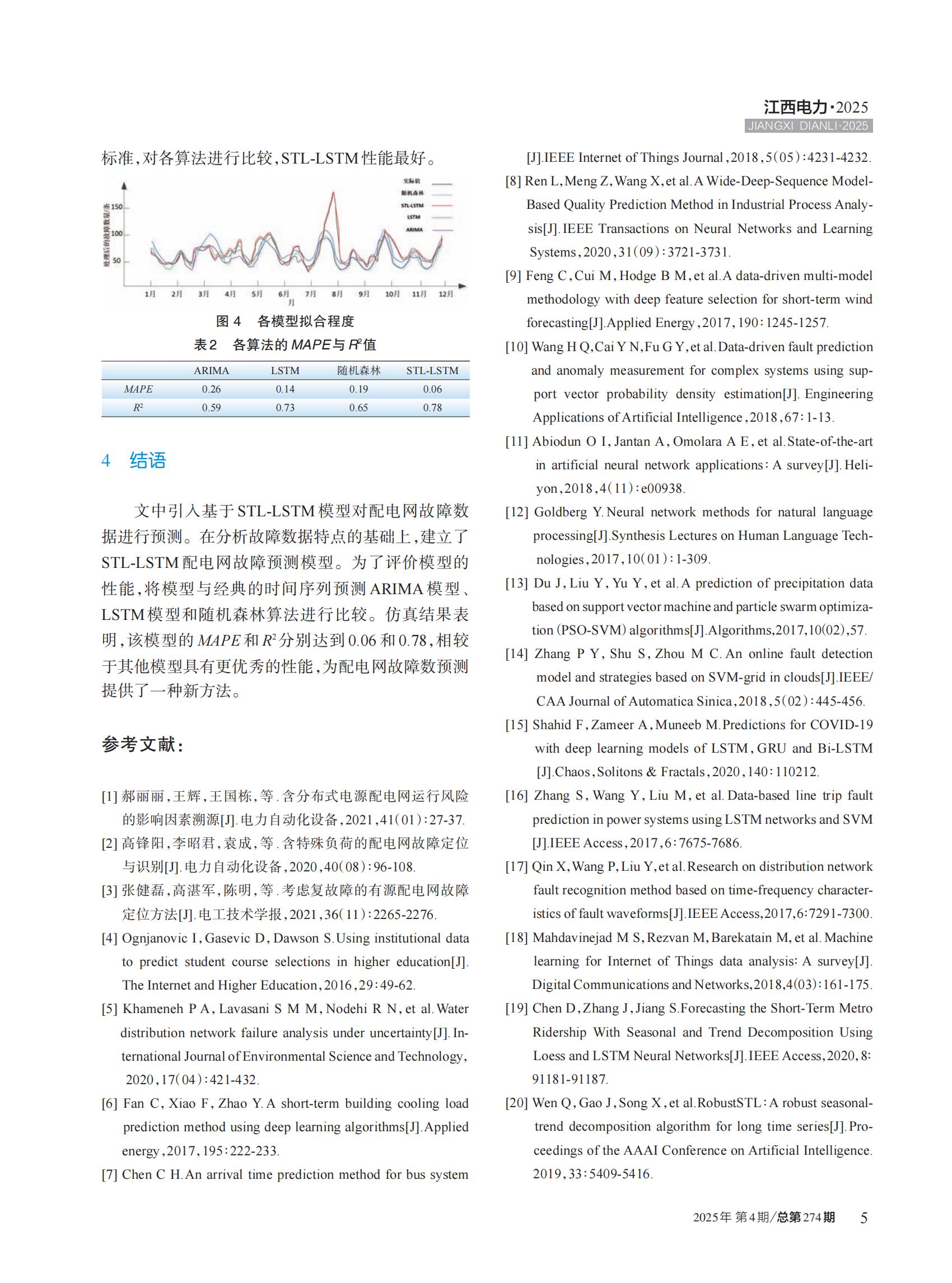针对配电网故障预测精度低导致的配网运行不稳定问题,提出一种基于 STL-LSTM 的配电网故障预测模型。 首先对配电网故障数据集进行数据分析,使用 STL(seasonal and trend decomposition using loess,STL)进行时间序列分 解,然后引入长短时记忆网络(long-short memory network,LSTM),对数据进行特征提取,对处理后的数据进行预测。 选择平均绝对百分比误差(MAPE)与决定系数(R2)作为性能评价指标 。实验结果表明,该模型的 MAPE 和 R2 分别达 到 0.06 和 0.78,相较于其他模型具有更优秀的性能,为配电网故障数据预测提供了一种精度可靠的的预测方法。
[1] 郝丽丽,王辉,王国栋,等 . 含分布式电源配电网运行风险 的影响因素溯源[J]. 电力自动化设备,2021,41(01)∶27-37.
[2] 高锋阳,李昭君,袁成,等 . 含特殊负荷的配电网故障定位 与识别[J]. 电力自动化设备,2020,40(08)∶96-108.
[3] 张健磊,高湛军,陈明,等 . 考虑复故障的有源配电网故障 定位方法[J]. 电工技术学报,2021,36(11)∶2265-2276.
[4] Ognjanovic I,Gasevic D,Dawson S.Using institutional data to predict student course selections in higher education[J]. The Internet and Higher Education,2016,29∶49-62.
[5] Khameneh P A,Lavasani S M M,Nodehi R N,et al. Water distribution network failure analysis under uncertainty[J]. In- ternational Journal of Environmental Science and Technology, 2020,17(04)∶421-432.
[6] Fan C,Xiao F,Zhao Y. A short-term building cooling load prediction method using deep learning algorithms[J].Applied energy,2017,195∶222-233.
[7] Chen C H.An arrival time prediction method for bus system
[J].IEEE Internet of Things Journal,2018,5(05)∶4231-4232.
[8] Ren L,Meng Z,Wang X,et al. A Wide-Deep-Sequence Model- Based Quality Prediction Method in Industrial Process Analy- sis[J]. IEEE Transactions on Neural Networks and Learning Systems,2020,31(09)∶3721-3731.
[9] Feng C,Cui M,Hodge B M,et al.A data-driven multi-model methodology with deep feature selection for short-term wind forecasting[J].Applied Energy,2017,190 ∶1245-1257.
[10] Wang H Q,Cai YN,Fu G Y,et al.Data-driven fault prediction and anomaly measurement for complex systems using sup- port vector probability density estimation[J]. Engineering Applications of Artificial Intelligence,2018,67 ∶1-13.
[11] Abiodun O I,Jantan A,Omolara A E,et al. State-of-the-art in artificial neural network applications∶A survey[J]. Heli- yon,2018,4(11)∶e00938.
[12] Goldberg Y. Neural network methods for natural language processing[J].Synthesis Lectures on Human Language Tech- nologies,2017,10(01)∶1-309.
[13] Du J,Liu Y,Yu Y,et al. A prediction of precipitation data based on support vector machine and particleswarm optimiza- tion(PSO-SVM)algorithms[J].Algorithms,2017,10(02),57.
[14] Zhang P Y,Shu S,Zhou M C. An online fault detection model and strategies based on SVM-grid in clouds[J].IEEE/ CAA Journal of Automatica Sinica,2018,5(02)∶445-456.
[15] Shahid F,Zameer A,Muneeb M.Predictions for COVID-19 with deep learning models of LSTM,GRU and Bi-LSTM [J].Chaos,Solitons & Fractals,2020,140 ∶110212.
[16] Zhang S,Wang Y,Liu M,et al. Data-based line trip fault prediction in power systems using LSTM networks and SVM [J].IEEE Access,2017,6∶7675-7686.
[17] Qin X,Wang P,Liu Y,et al. Research on distribution network fault recognition method based on time-frequency character- istics of fault waveforms[J].IEEE Access,2017,6∶7291-7300.
[18] Mahdavinejad M S,Rezvan M,Barekatain M,et al. Machine learning for Internet of Things data analysis∶A survey[J]. Digital Communications and Networks,2018,4(03)∶161-175.
[19] Chen D,Zhang J,Jiang S.Forecasting the Short-Term Metro Ridership With Seasonal and Trend Decomposition Using Loess and LSTM Neural Networks[J]. IEEE Access,2020,8∶ 91181-91187.
[20] Wen Q,Gao J,Song X,et al.RobustSTL ∶A robust seasonal- trend decomposition algorithm for long time series[J]. Pro- ceedings of the AAAI Conference on Artificial Intelligence. 2019,33 ∶5409-5416.
